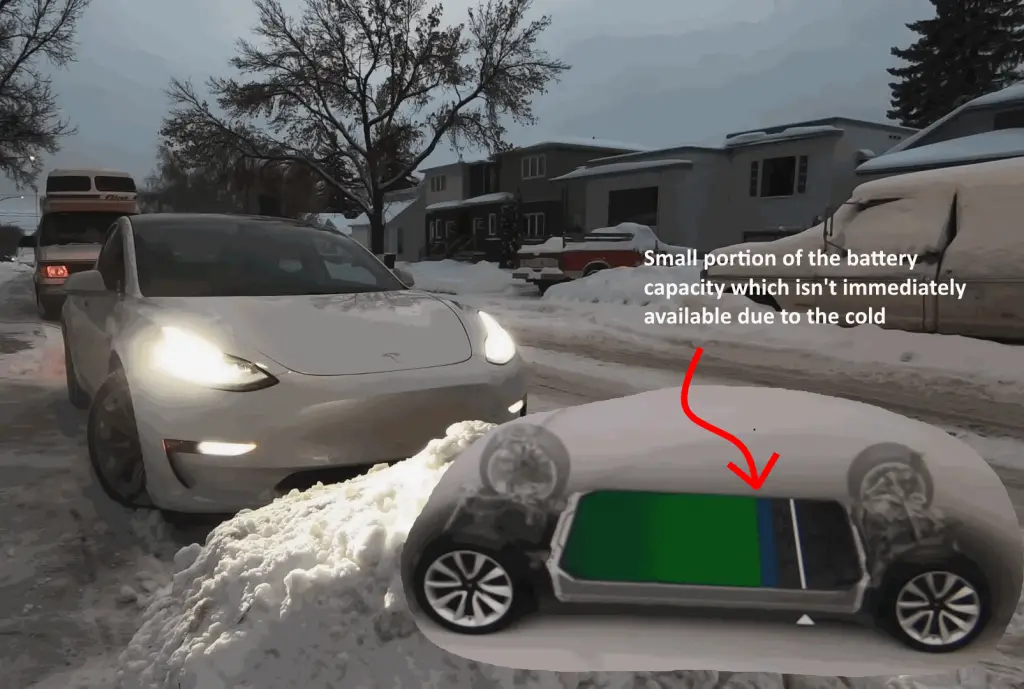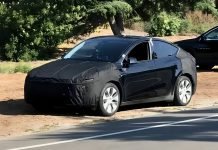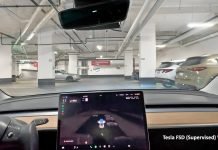Cold starts is one of the issues that almost all vehicles face. Automobile owners face this issue irrespective of whether their car runs on gas or electricity. With a number of people worldwide yet to be convinced of the reliability of electric vehicles, battery performance in cold conditions is going to play a major role in this discussion.

How Much Range Does A Tesla Lose In Cold Weather
That is why the owner of YouTube channel SaskTesla decided to conduct a test on his Tesla Model 3. The car was kept in extremely cold weather overnight. Following this, he decided to check the percentage of range available to him with the cold battery. The video shows the actual performance of batteries in extreme climatic conditions.
Testing A Model 3 in -18°C
The test was quite straightforward. He parked his car in front of his house instead of the garage. Leaving the car unplugged through the night, he decided to check the loss of range. He also activated sentry mode for security and had a range of 362 km (225 miles) initially.
A colder battery affects the performance of regenerative braking. The vehicle was parked in front of the house at around 5:30 pm and was left there till 9:15 am the next day. That is 15 hours of unplugged parking in -18°C. The next day, the first thing he noticed was the defrosted cameras on the side of the car. With Sentry mode activated, the vehicle was ensured that the cameras do not get covered by the snow, thus ensuring security.
The battery percentage had dropped off a bit in the cold, and the range was now 318 km (198 miles). So, roughly around 44 km (27 miles), or 9%, was lost overnight due to extreme cold. But there was also a small portion of the battery capacity which wasn’t immediately available due to the cold. The battery management system (BMS) locks up this small portion due to the low temperature, and it will be unlocked after the battery heats up. This small portion constitutes around 4-5%, so the actual loss is just 5%.
How This Affects The Driving
Of course, no test is complete without actually driving the car. The interior was at 3°C, and with the windshield frozen up, he decided to warm up the interior. In around 3 minutes, the temperature was brought to a more comfortable 25°C. This heating process further used around 1.5% of the battery, reducing the range by 8 km (5 miles). The range was now down to 310 km (193 miles).
Once on the road, you can hear a slight whine from the electric motors. This comes from some resistance from the motors, which helps to warm up the battery quicker. After having driven the car around for 11 km (7 miles), the range had actually dropped by 18 km (11 miles). This is due to the weather conditions, as you end up getting bad mileage on your car in winter.
One big thing to be noted is that the car was displaying a range of 292 km (182 miles). But the projected range, according to calculations for an actual trip would be just 194 km (121 miles). This is a loss of roughly 34% of battery range due to low temperatures. This, however, does not mean that all this range is lost. The 34% ‘loss’ is actually a part of the battery getting locked up to avoid the risk of degradation. If the temperature is brought back to the optimal working range, this locked portion gets unlocked.
Our Opinion
This test proves that Tesla does take care of its battery in a harsher climate. Yes, a 34% reduction in the range is significant. But this range can be brought back by using features such as battery pre-warming. And to all those crying about lost range, don’t forget that a combustion vehicle may not lose gas directly, but will use up a lot of fuel in colder climates, affecting the mileage anyway. Yes, mileage gets hit in the winters, especially in extreme conditions like Canada and the Scandinavian countries. But by allowing pre-heating of the battery, most of this loss can be nullified.


















